Bats in Caves Funny Looking Bat
They've been called creepy, scary and chilling, just bats are an important species that impact our daily lives in ways we might not even realize. From pollinating our favorite fruits to eating pesky insects to inspiring medical marvels, bats are heroes of the dark.
Bat Week — held the final week in October — celebrates the function of bats in nature and all that these astonishing creatures do for us. Check out some interesting bat facts (and absurd photos) below.
1. In that location are over one,400 species of bats worldwide. Bats tin can be institute on nearly every office of the planet except in extreme deserts and polar regions. The divergence in size and shape are every bit impressive. Bats range in size from the Kitti'due south grunter-nosed bat (also called the Bumblebee Bat) that weighs less than a penny — making it the world'southward smallest mammal — to the flight foxes, which can have a wingspan of up to 6 feet. The U.S. and Canada are home to nearly 45 species of bats and additional species are establish in the U.S. territories in the Pacific and Caribbean area.
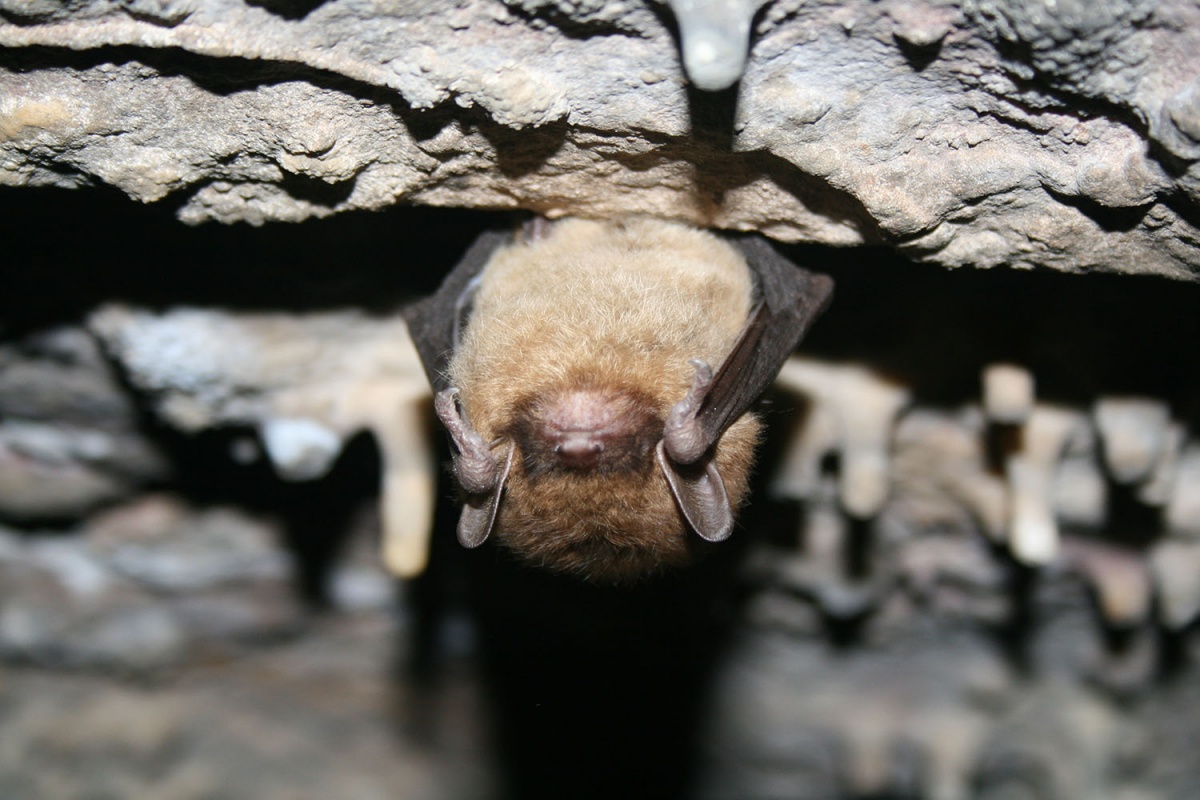
The little chocolate-brown bat lives up to its name. It weighs just a one/four-ane/3 of an ounce, is about 2 inches long, has a 6-inch wingspan and you'll never guess what color information technology is. Photo by Ann Froschauer, USFWS.
2. Not all bats hibernate. Even though bears and bats are the two virtually well-known hibernators, not all bats spend their wintertime in caves. Some bat species similar the spotted bat survive past migrating in search of food to warmer areas when information technology gets dank.
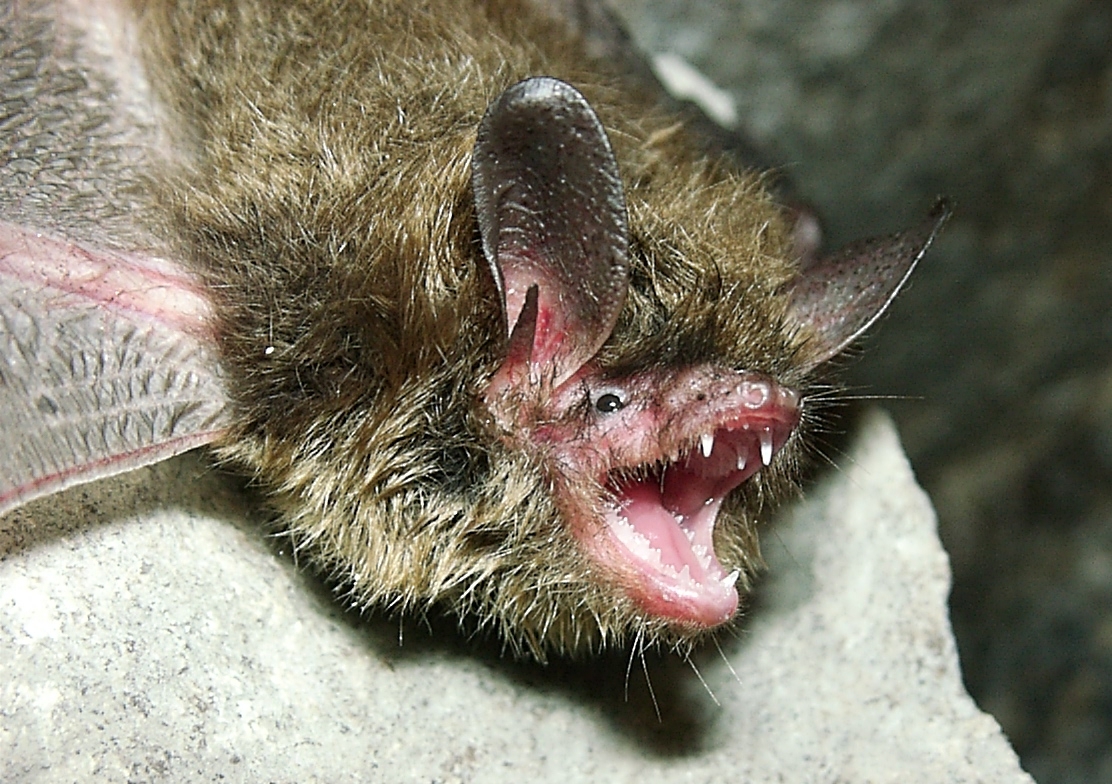
The Northern long-eared bat spends wintertime hibernating in caves and mines. Photo by Andrew King, USFWS.
3. Bats have few natural predators — disease is ane of the biggest threats.Owls, hawks and snakes eat bats, just that'southward zero compared to the millions of bats dying from white-nose syndrome. The affliction — named for a white mucus on the muzzle and wings of bats — affects hibernating bats and has been detected in 37 states and seven Canadian provinces. This deadly syndrome has decimated certain species more than than others. It has killed over 90% of northern long-eared, little brown and tri-colored bat populations in fewer than 10 years. Scientists are working to sympathise the disease. You can assistance by avoiding places where bats are hibernating. If y'all do go hush-hush, decontaminate your vesture, footwear and gear to assist with not spreading this disease to other areas.
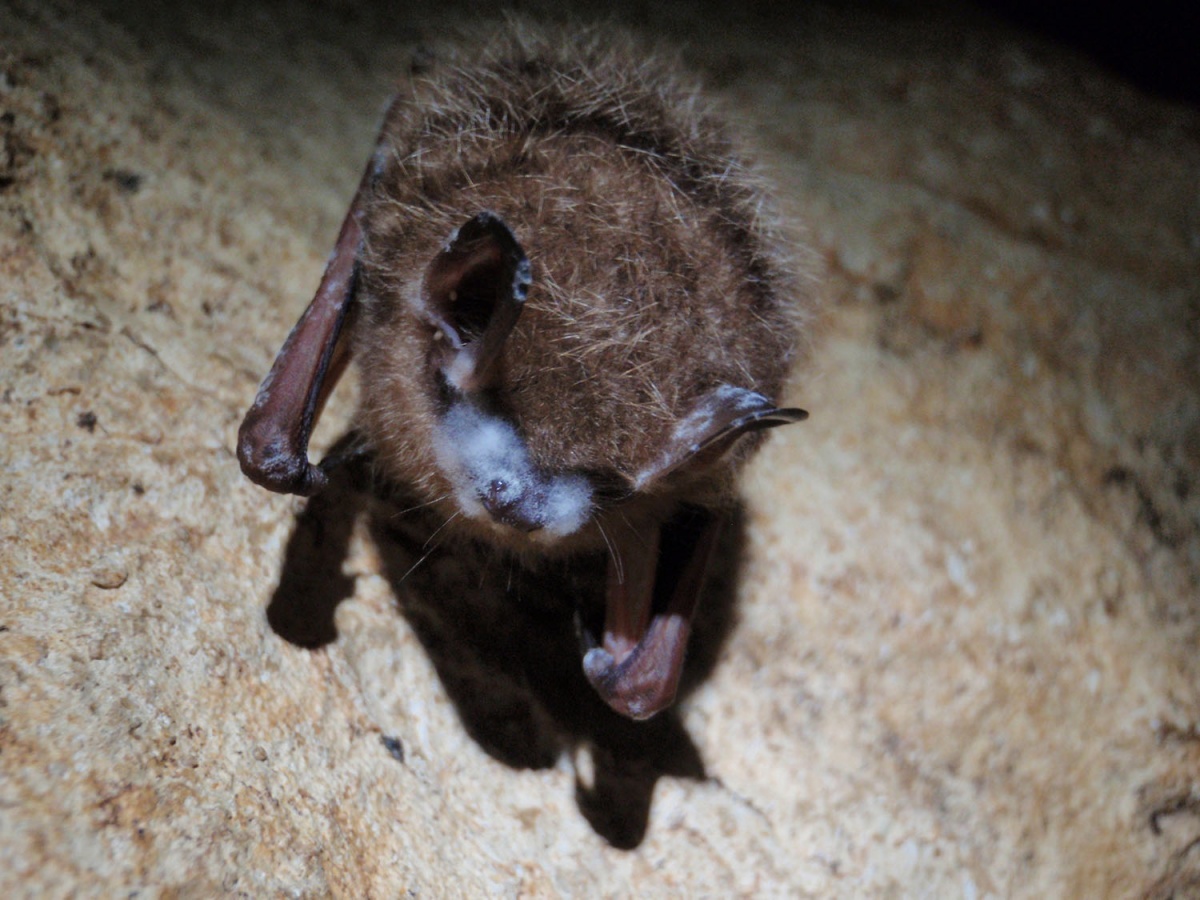
A tri-colored bat shows symptoms of white-nose syndrome. Photograph past National Park Service.
4. Without bats, say farewell to bananas, avocados and mangoes. Over 300 species of fruit depend on bats for pollination. Bats help spread seeds for nuts, figs and cacao — the main ingredient in chocolate. Without bats, we as well wouldn't have plants like agave or the iconic saguaro cactus.
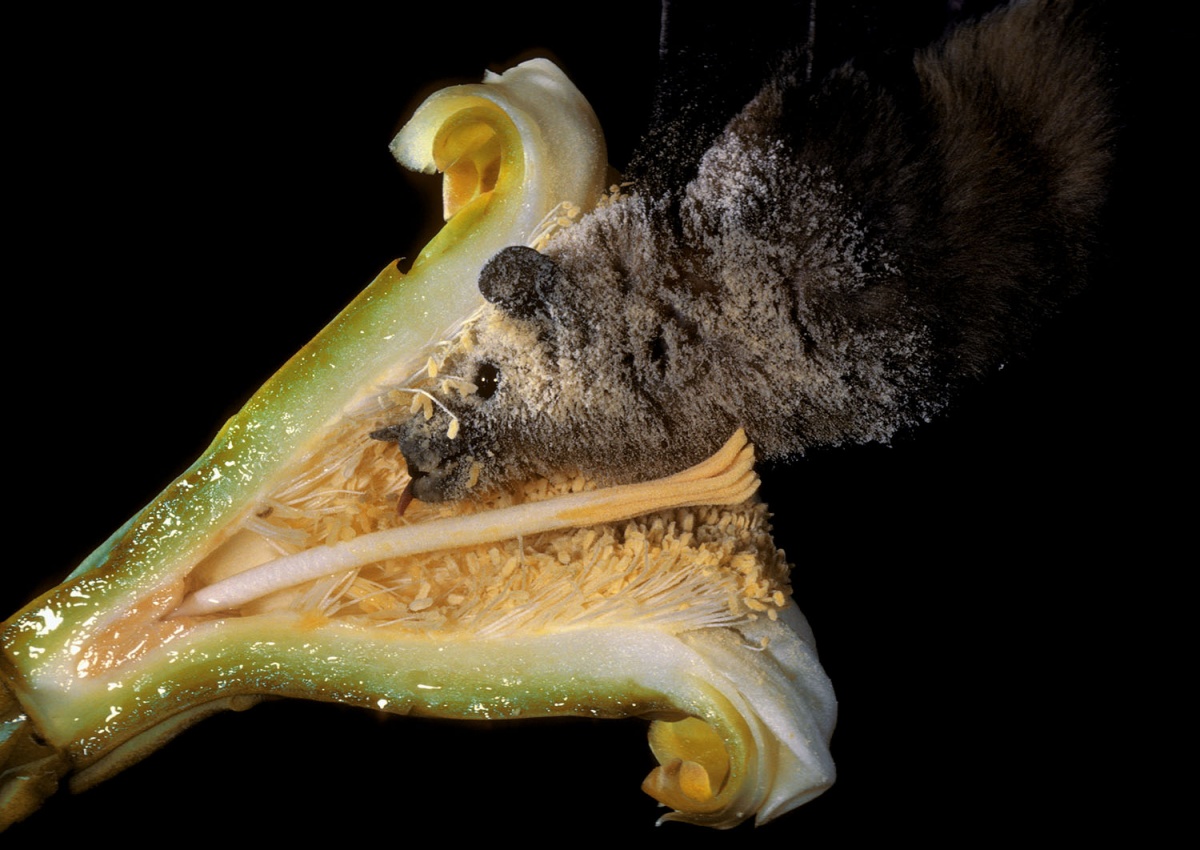
Merely similar a hummingbird, the lesser long-nosed bat tin hover at flowers, using its 3-inch-long tongue — equal to its torso length — to feed on nectar in desert environments. Photo by Merlin D. Tuttle, Bat Conservation International.
5. Night insects have the nigh to fearfulness from bats. Each night, bats tin eat their body weight in insects, numbering in the thousands! This insect-heavy diet helps foresters and farmers protect their crops from pests.
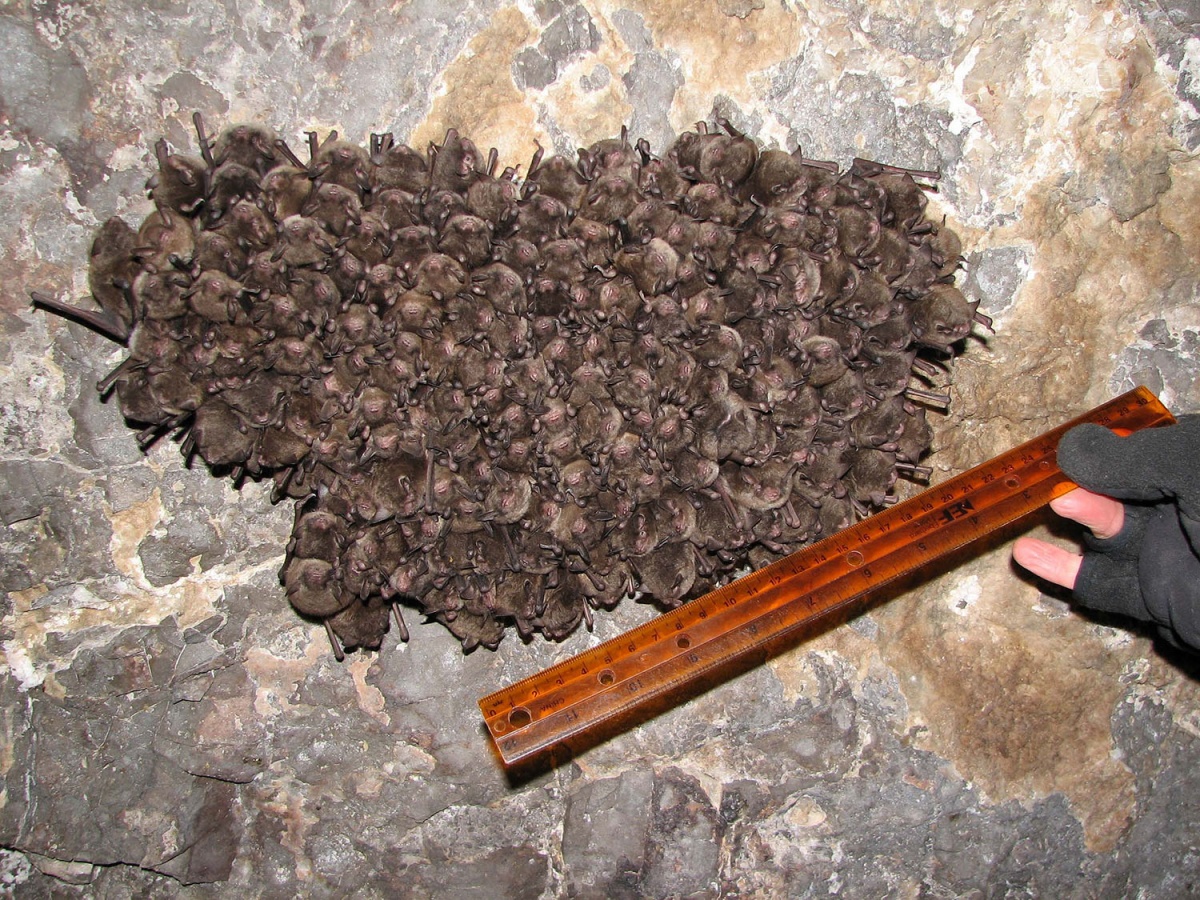
The endangered Indiana bat, which weighs most iii pennies, consumes up to half its majority every evening. Photo by Andrew Rex, USFWS.
6. Bats are the but flight mammal. While the flying squirrel tin only glide for curt distances, bats are true fliers. A bat's wing resembles a modified human hand — imagine the skin between your fingers larger, thinner and stretched. This flexible skin membrane that extends between each long finger bone and many movable joints make bats agile fliers.
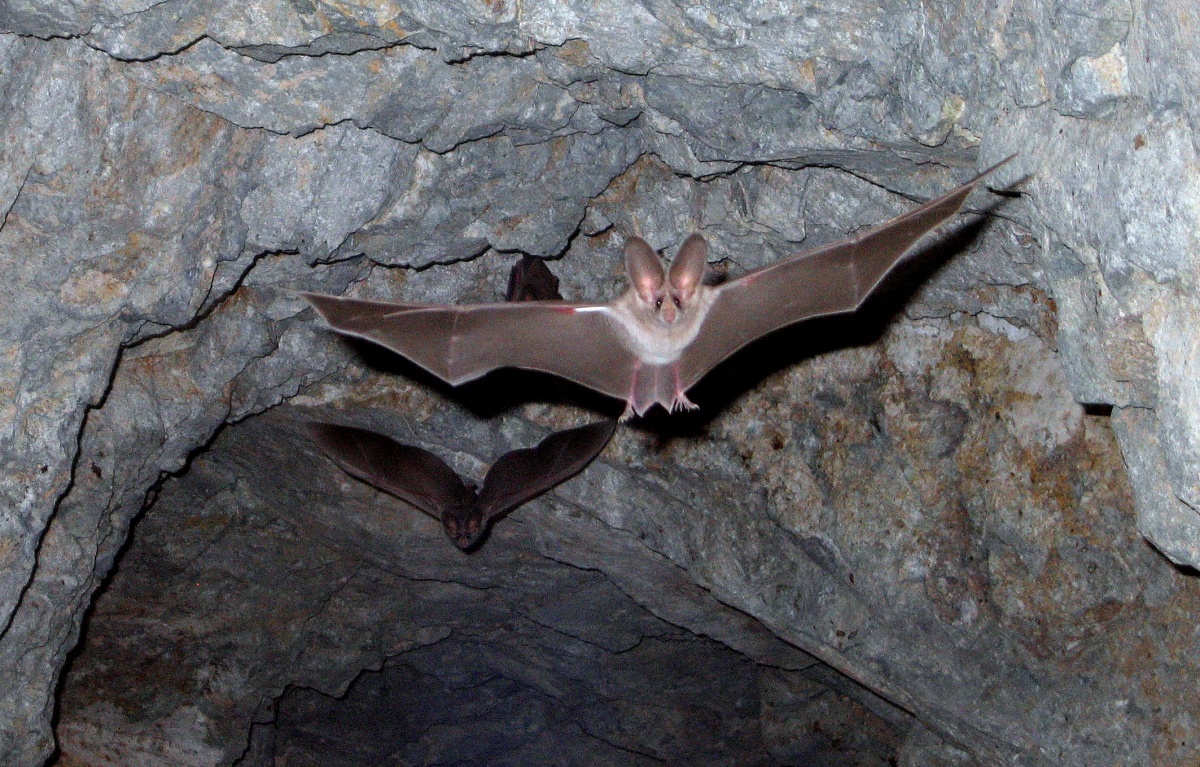
California leafage-nosed bats exit a cave at Joshua Tree National Park. You can easily distinguish these bats past their leaf-like noses and large ears. Photo by Kristen Lalumiere, National Park Service.
seven. Bats may be small, only they're fast petty creatures.How fast a bat flies depends on the species, but they can reach speeds over 100 miles per hour according to new research.
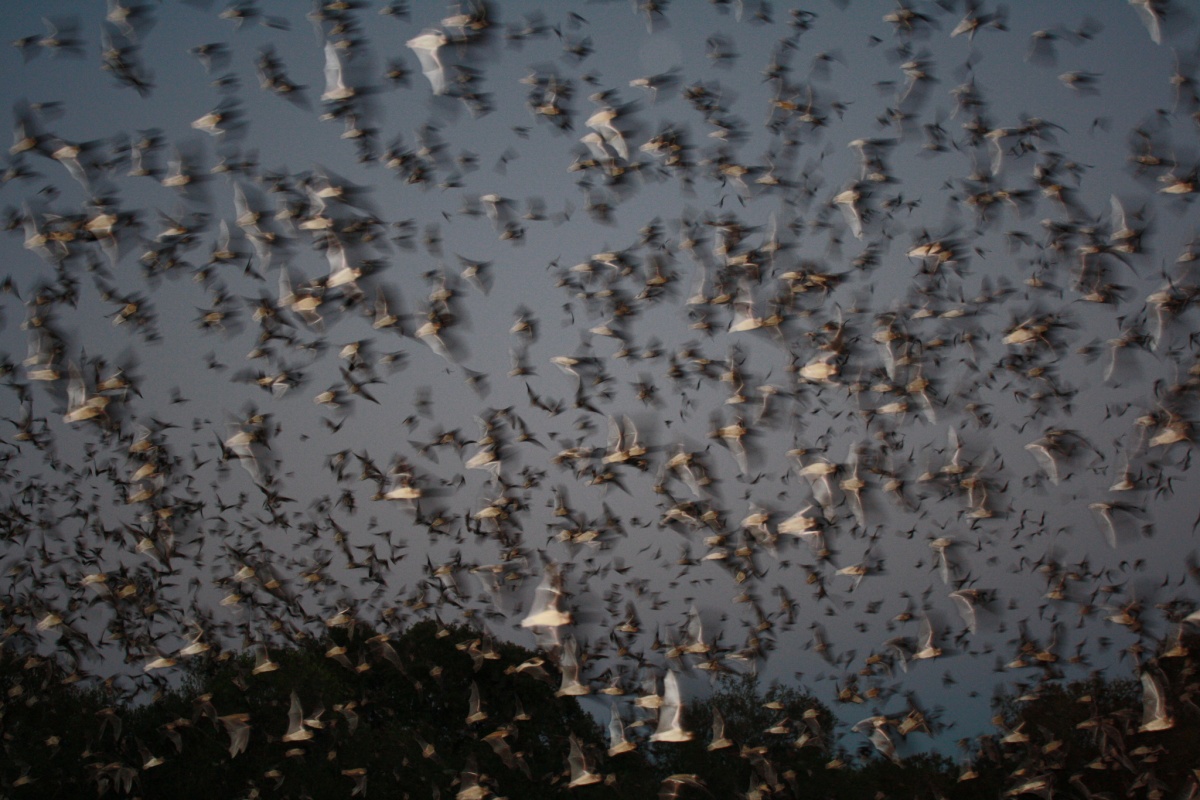
Mexican free-tailed bats emerge from Texas's Bracken Cave. Over xv meg bats live there, making information technology the largest known bat colony (and largest concentration of mammals) on Earth. Photo by Ann Froschauer, USFWS.
eight. Conservation efforts are helping bat species recover.At least 12 types of U.S. bats are endangered, and more than are threatened. These amazing animals confront a multitude of threats including habitat loss and disease, but we're working to modify that. A unique international conservation partnership in the southwestern U.S. and Mexico has been working to aid one species, the lesser long-nosed bat, recover to the point it can be removed from the Endangered Species listing. In 1988, there were idea to exist fewer than one,000 bats at the 14 known roosts range broad. There are now an estimated 200,000 bats at 75 roosts!
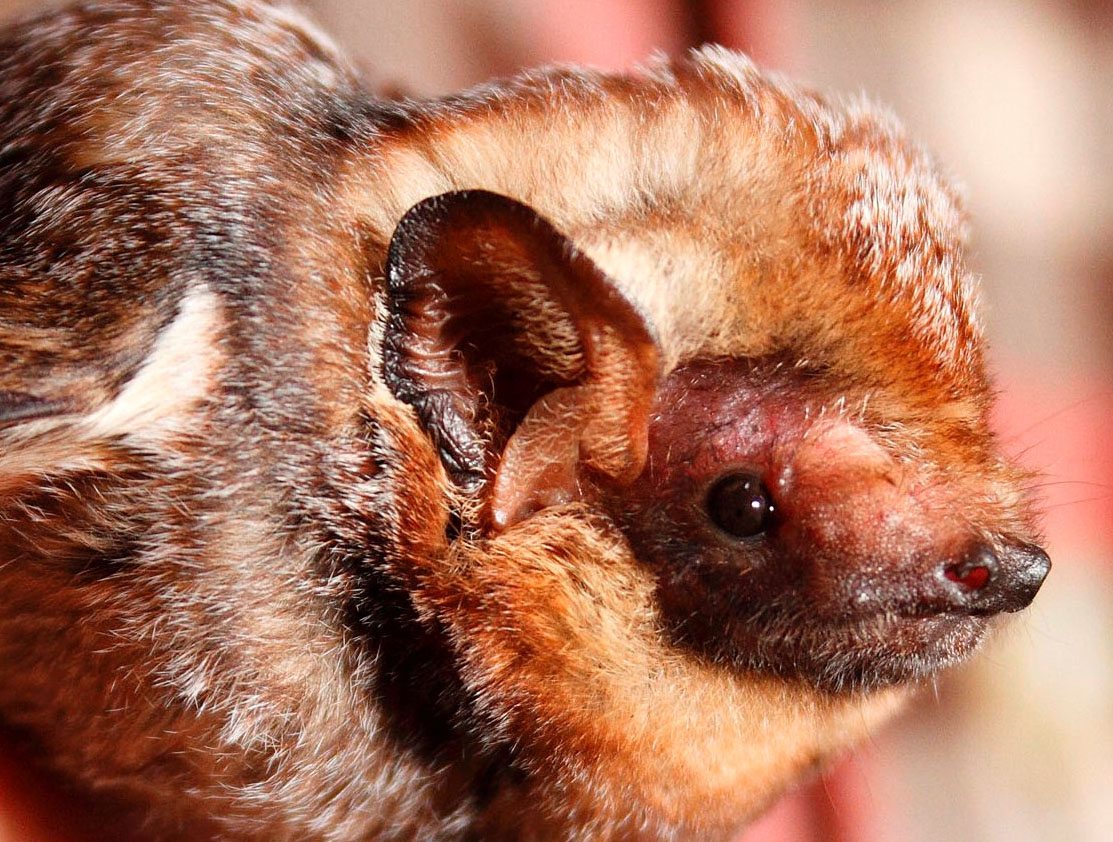
The ancestors of the endangered Hawaiian Hoary Bat traveled over 3,600 kilometers from the Pacific Coast nearly 10,000 years ago to become Hawaii's country state mammal. Photo by Frank Bonaccorso, USGS.
9. The longest-living bat is 41 years onetime. It's said that the smaller the fauna, the shorter its lifespan, but bats interruption that rule of longevity. Although most bats live less than 20 years in the wild, scientists have documented six species that life more than 30 years. In 2006, a tiny bat from Siberia set the world record at 41 years.
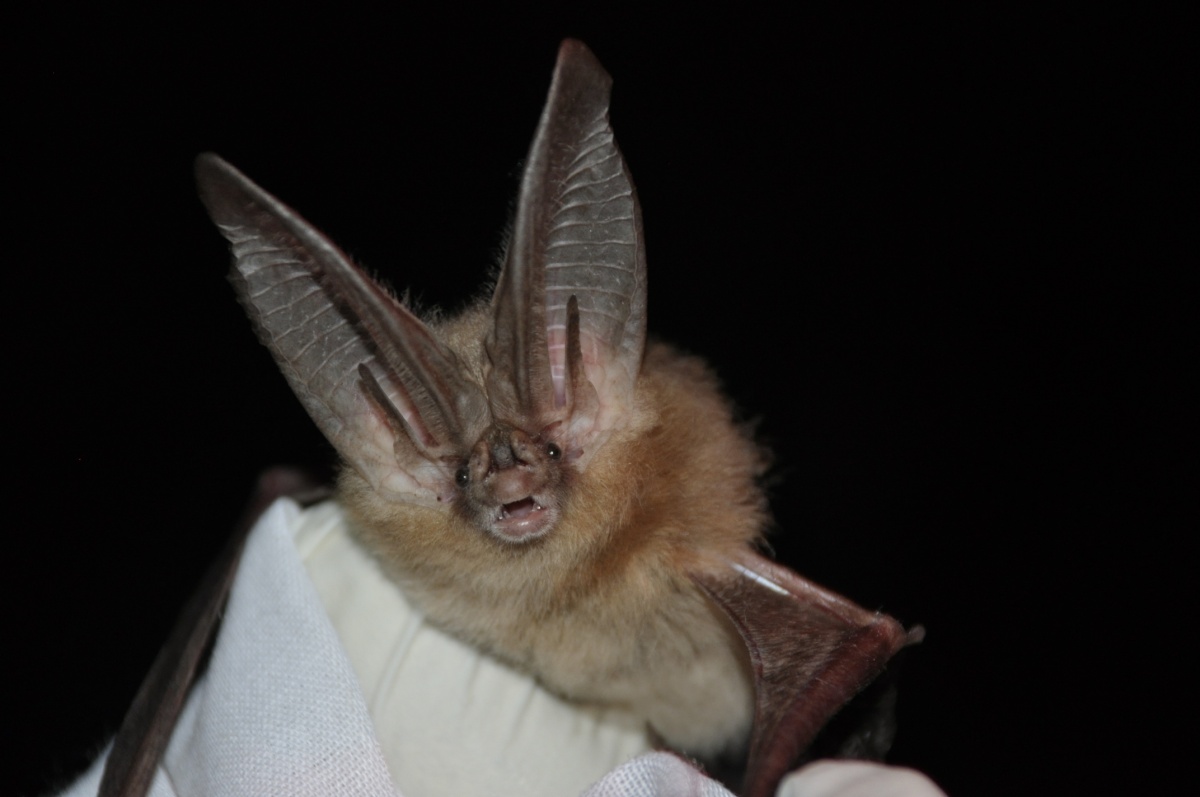
The Townsend's big-eared bat'southward average lifespan is 16 years. Photograph past Ann Froschauer, USFWS.
10. Similar cats, bats make clean themselves. Far from beingness dirty, bats spend a lot of time grooming themselves. Some, like the Colonial bat, even groom each other. Besides having sleek fur, cleaning as well helps control parasites.
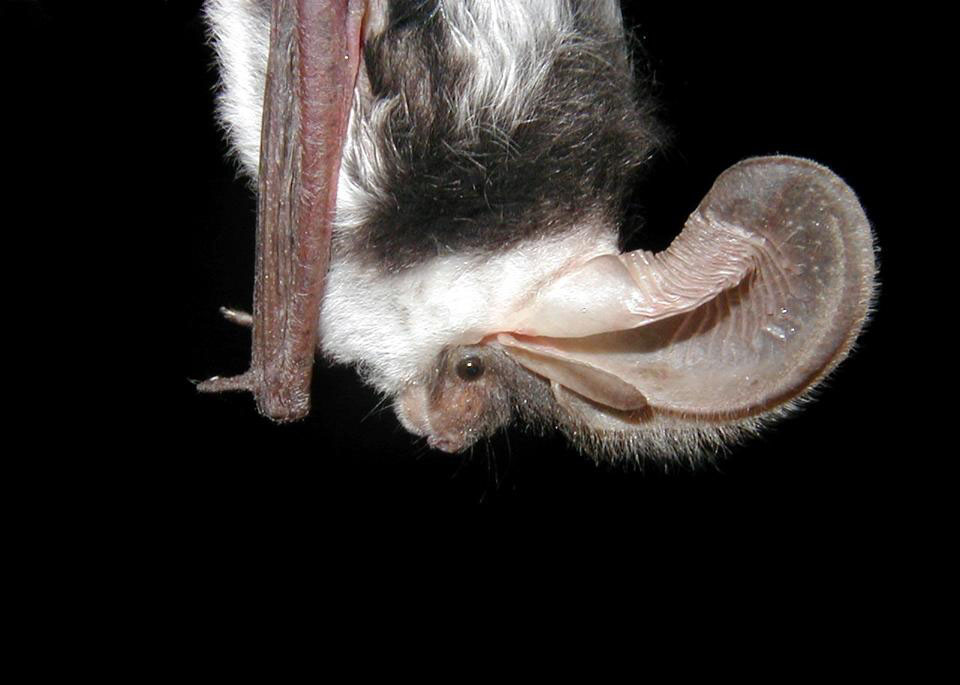
The spotted bat gets its name from its distinct appearance of black and white spotted fur. Another interesting fact about the spotted bat — it has the largest ears of any North American species. Photo by Paul Cryan, USGS.
11. Dogs aren't the only ones with pups. Baby bats are called pups, and a group of bats is a colony. Similar other mammals, mother bats feed their pups breastmilk, not insects. Nigh bats give birth to a single pup! There is at least 1 species that commonly has twins and that is the eastern red bat. Momma bats form nursery colonies in bound in caves, expressionless copse and rock crevices.
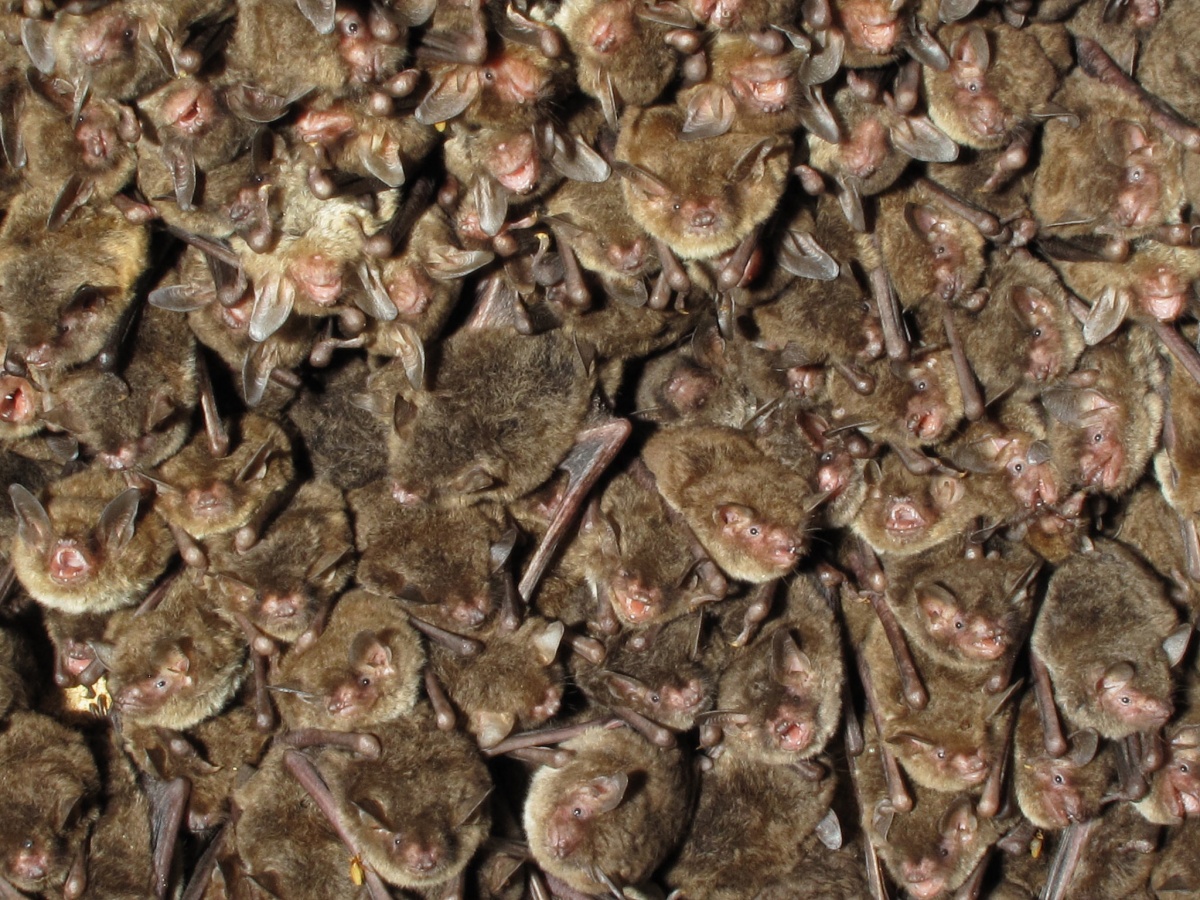
Bats do good from maintaining a close-knit roosting group considering they increase reproductive success, and it is important for rearing pups. Photograph by Alan Cressler, USGS.
12. Bats are inspiring medical marvels. About eighty medicines come up from plants that rely on bats for their survival. While bats are not blind, studying how bats employ echolocation has helped scientists develop navigational aids for the bullheaded. Enquiry on bats has also led to advances in vaccines.
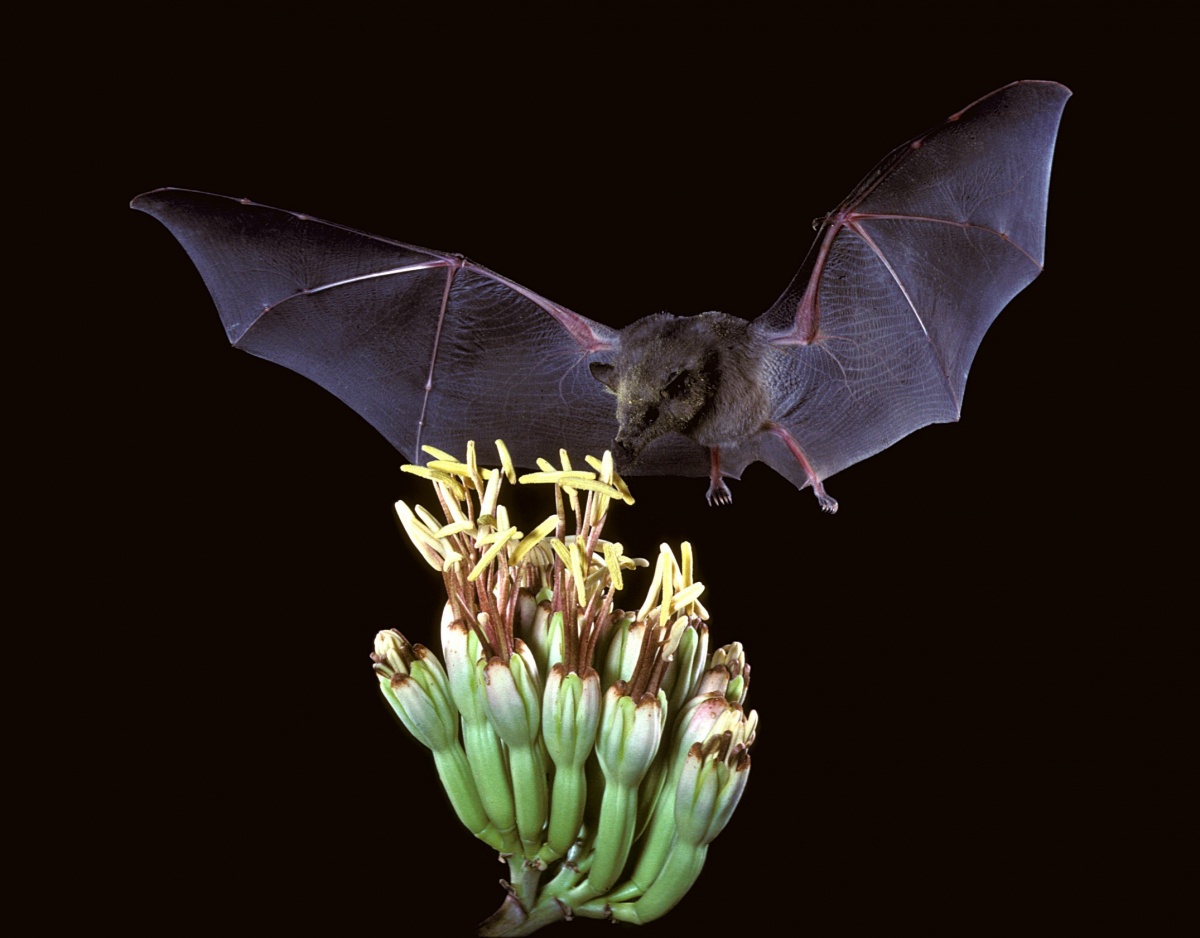
The Mexican long-tongued bat is a vital pollinator in desert systems. They accept a long, bristle-like tongue, allowing them to sip nectar from agave and cacti. Photo by USFWS.
13. Innies or Outies? Humans aren't the only ones with belly buttons. With a few exceptions, virtually all mammals have navels because of mom'south umbilical string, and bats are no different. At present the existent question is: Innies or outies?
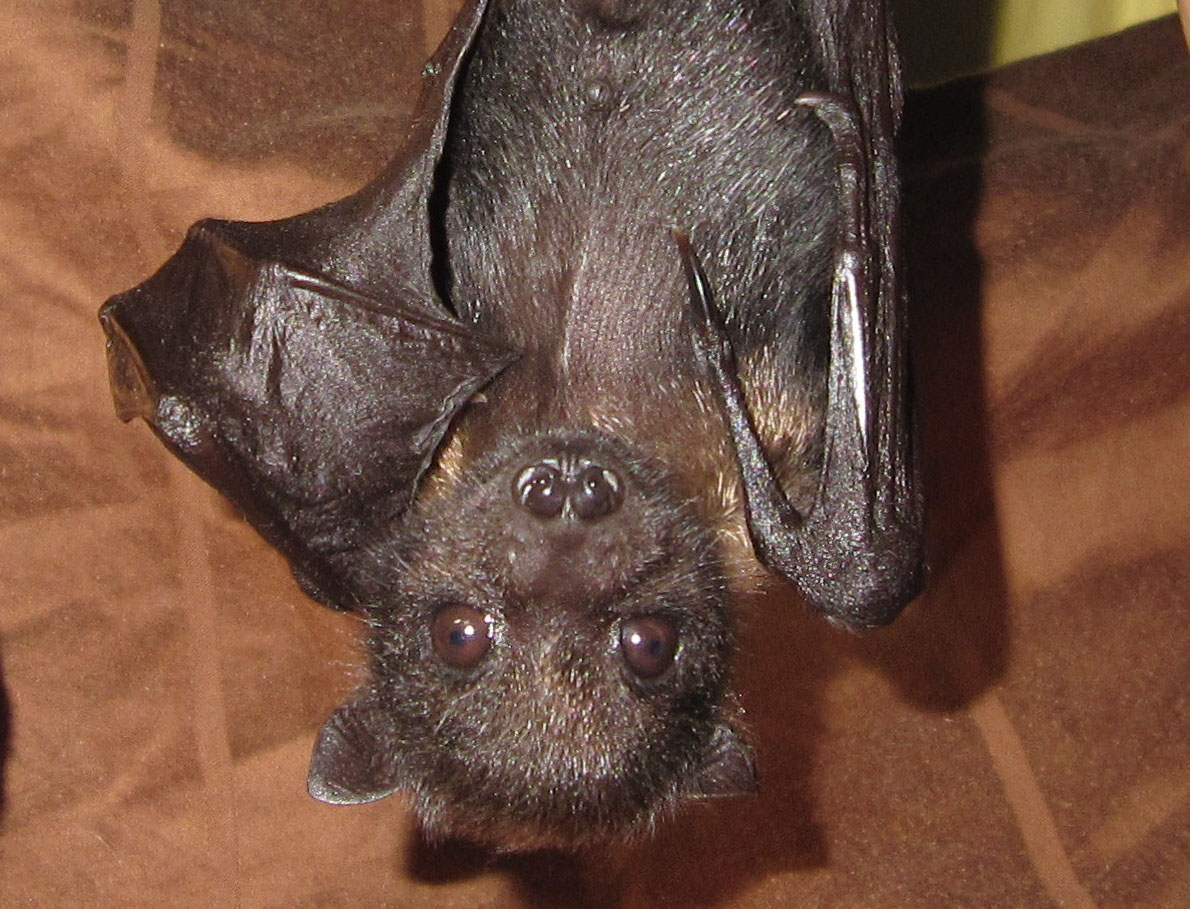
Tin you spot this Mariana Fruit bat's abdomen button? Photo by Julia Boland, USFWS.
Bats need your assist. Y'all can help protect these amazing creatures by planting a bat garden or installing a bat house. Stay out of closed caves, especially ones with bats. If you're visiting an open cave, brand sure to preclude the spread of white-nose syndrome past following these guidelines.
Source: https://www.doi.gov/blog/13-facts-about-bats
0 Response to "Bats in Caves Funny Looking Bat"
Post a Comment